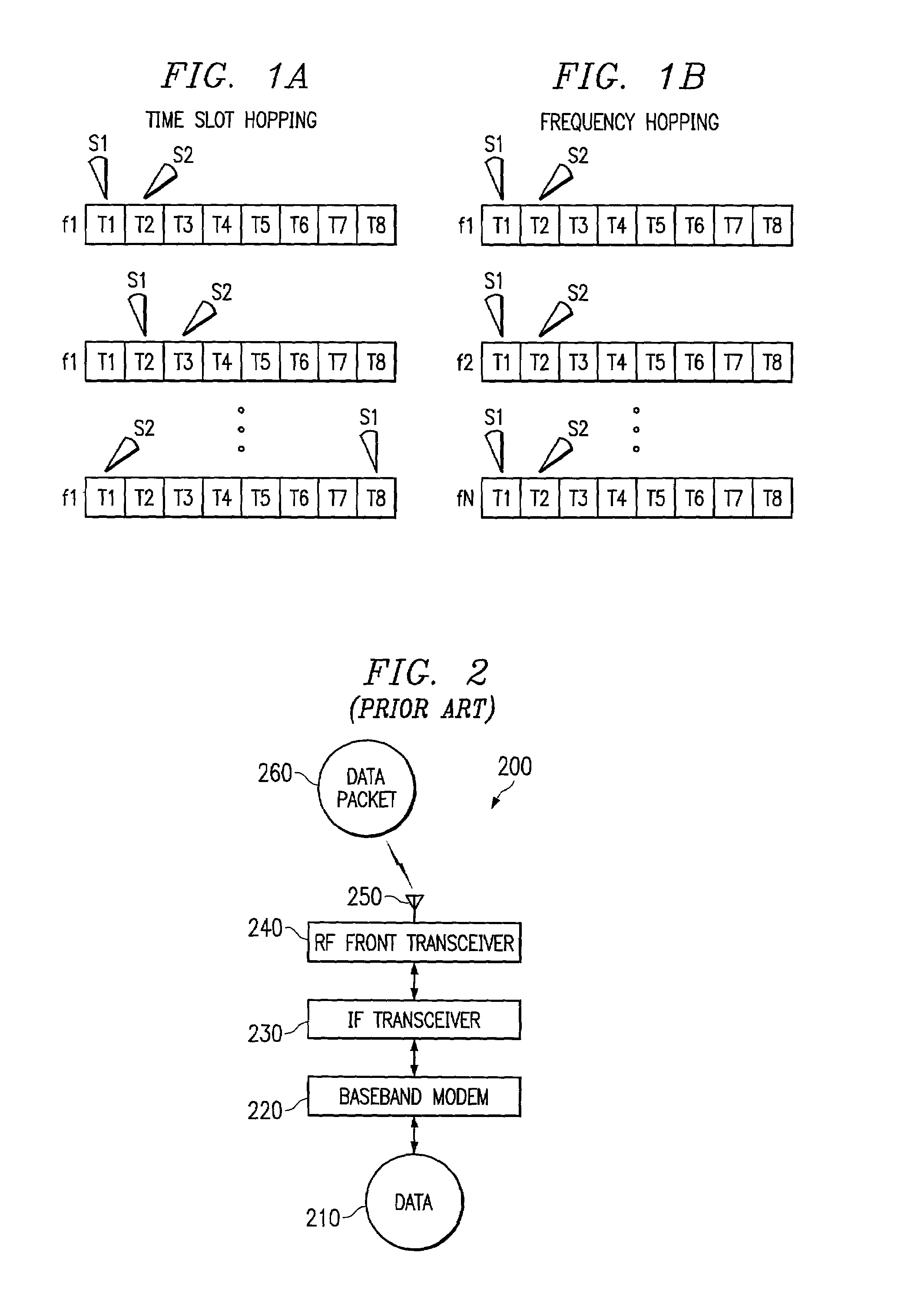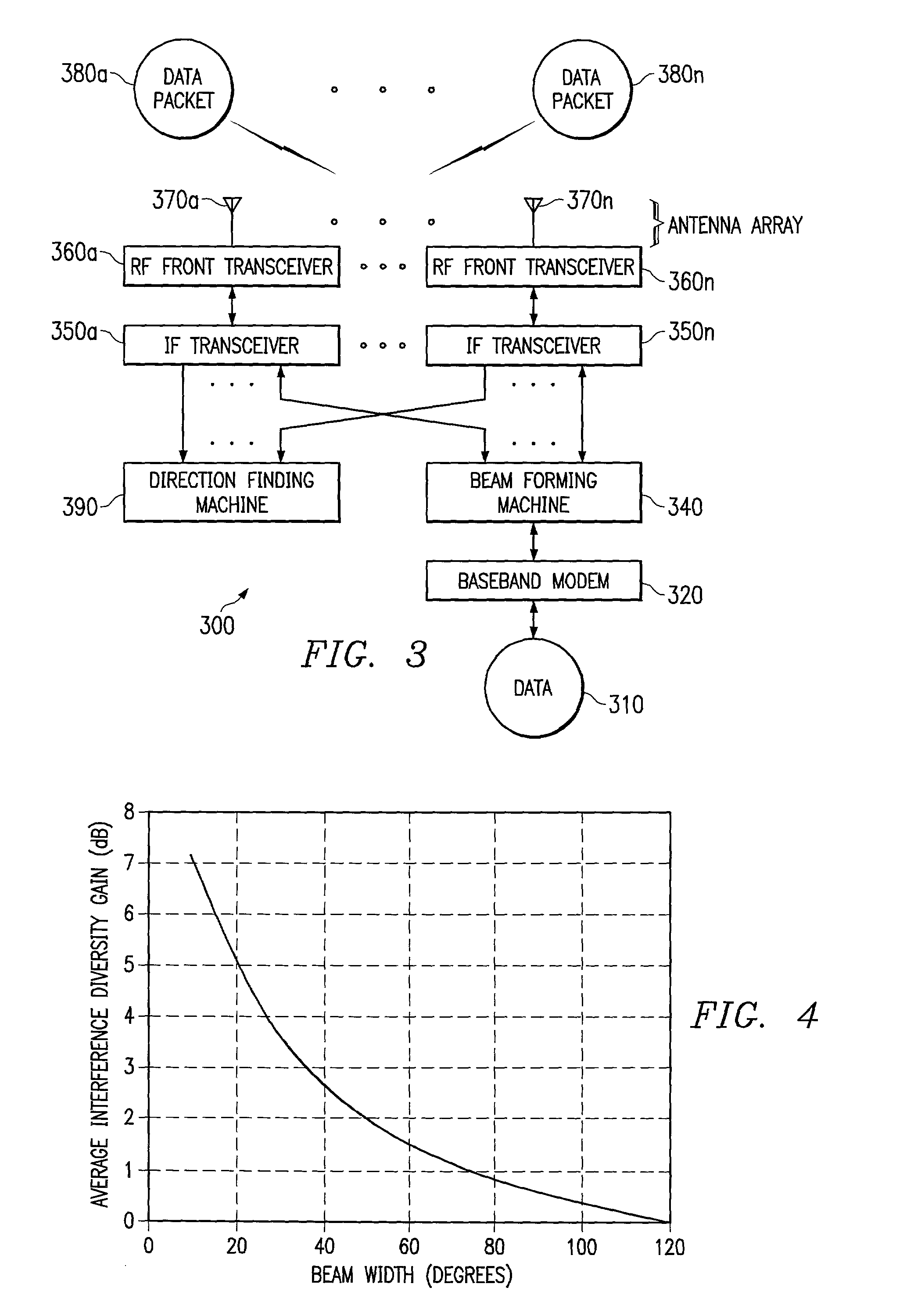Space-time and space-frequency hopping for capacity enhancement of mobile data systems
- Summary
- Abstract
- Description
- Claims
- Application Information
AI Technical Summary
Benefits of technology
Problems solved by technology
Method used
Image
Examples
embodiment
Slow Hopping Embodiment
[0063]In a second embodiment of the present invention, hopping of various communication attributes is provided at a rate slower than the interleaving frame rate (referred to herein as the slow hopping system or slow hopping algorithm). According to a preferred embodiment slow hopping system, the number of simultaneous beams is chosen as large as possible to maximize the aggregate throughput during each hop interval. The criterion used to select the simultaneous beams is preferably maximization of the sum (in dB) of the pilot channel C / I ratios of the active subscribers in each time slot. As with the fast hopping system discussed above, the direction of each subscriber is assumed to be known to with reasonable accuracy, such as to within 5°. The minimum angular separation of the active subscribers (θmin) for this embodiment is preferably equal to the minimum beam width (B). Once the active subscribers are selected, the data rate for each subscriber is preferabl...
PUM
 Login to View More
Login to View More Abstract
Description
Claims
Application Information
 Login to View More
Login to View More - R&D
- Intellectual Property
- Life Sciences
- Materials
- Tech Scout
- Unparalleled Data Quality
- Higher Quality Content
- 60% Fewer Hallucinations
Browse by: Latest US Patents, China's latest patents, Technical Efficacy Thesaurus, Application Domain, Technology Topic, Popular Technical Reports.
© 2025 PatSnap. All rights reserved.Legal|Privacy policy|Modern Slavery Act Transparency Statement|Sitemap|About US| Contact US: help@patsnap.com



